Economical, flavorful, intense vegetarian eggplant preparations inspired by those of various regions in India, Afghanistan, Pakistan and Sri Lanka.
One of my go-to dishes, one that I can have in the fridge any day of the week, is a good eggplant curry. The three main preparations are a traditional curry in the form of Eggplant Masala, Bagara Baingan, which introduces toasted peanuts and sesame seeds, and Baingan Bartha – an oil rich preparation which is delightful as a spread atop some fresh naan.
Some practice in making curries from scratch is necessary, and the ingredient list is somewhat exotic. Unless you plan to regularly make fresh curries, you should buy these in the smallest size possible. We go through a great deal of them, so we buy them in bulk.
Common Ingredients needed in the pantry:
- Onion seed (Black Kalonji)
- Mustard Seed
- Cumin Seed
- Curry Leaves
- Asafetida (Hing Powder)
- Garam Masala
- Madras Curry Powder
- Chili Powder (red/Hot)
- Turmeric
- Ginger Powder
- Fenugreek Powder
- White Pepper (ground)
- Black Pepper (ground)
- Fresh Green Chilies (Thai – Indian – Pimiento de Gernika)
- Red Onion
- Fresh Tomato
- Cilantro (to taste)
- Baby Black Eggplant
- Bay Leaf
- Gingelly Oil
There are certain details about some of these ingredients that we’ll need to cover in another article. Their usage, quantities, preparations and effects on the dish are ripe for a featured discussion that I won’t try to cover here. But we will get to some of the details.
First and foremost – the eggplant, how to select them and prepare them for the dish.
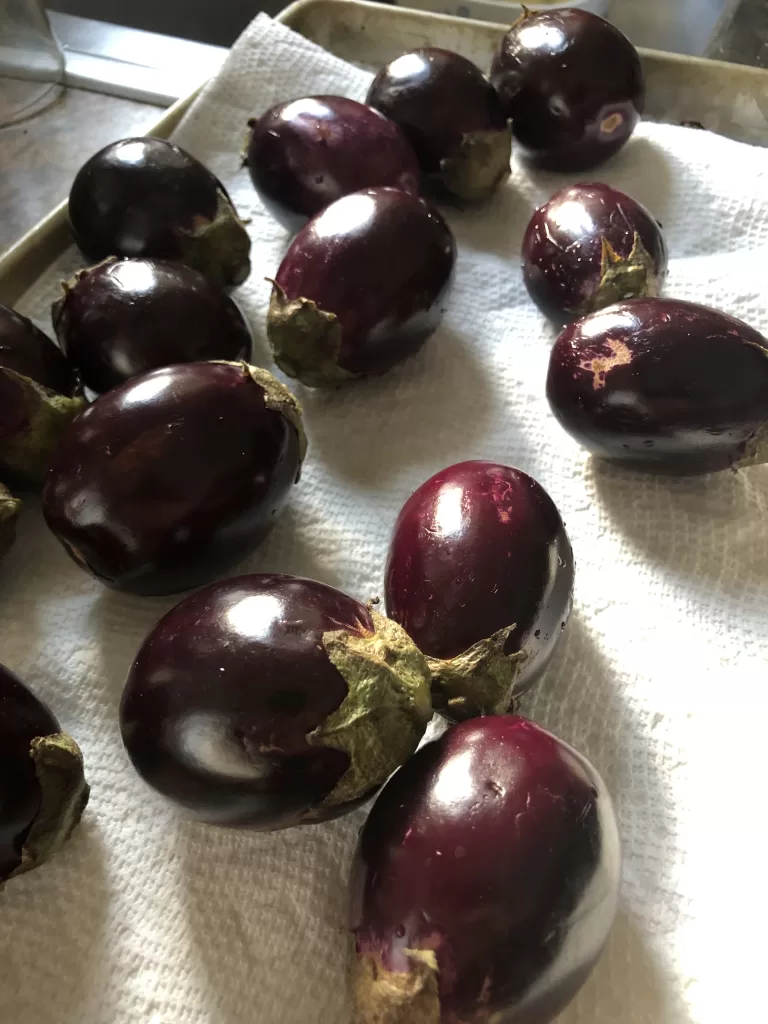
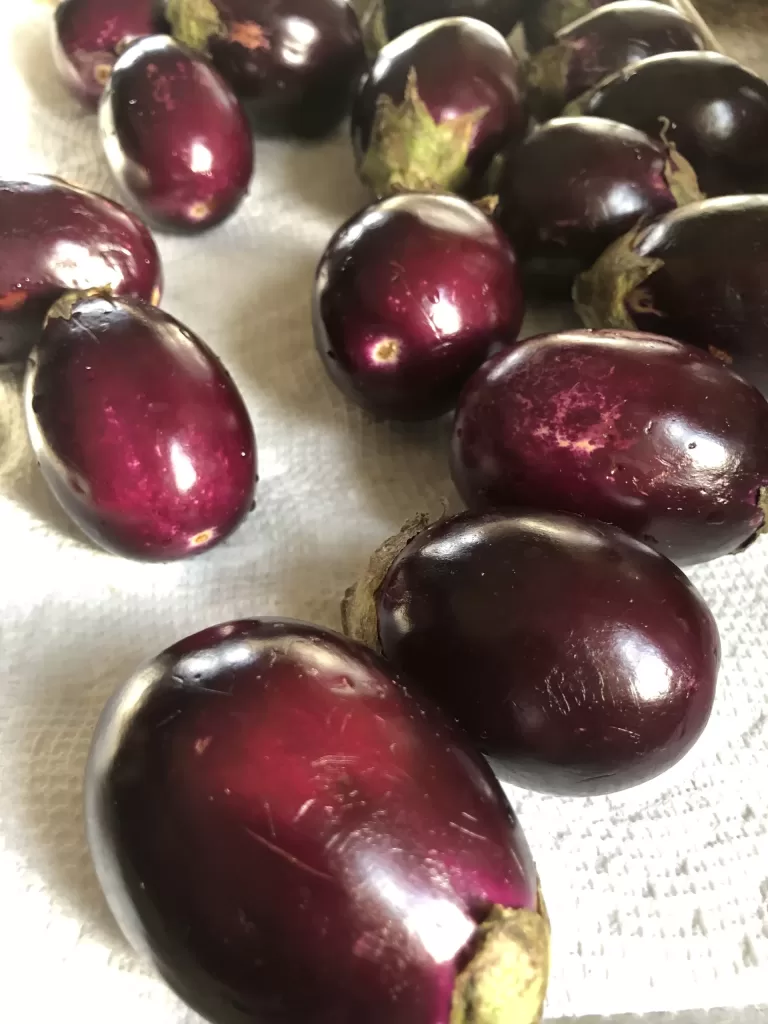
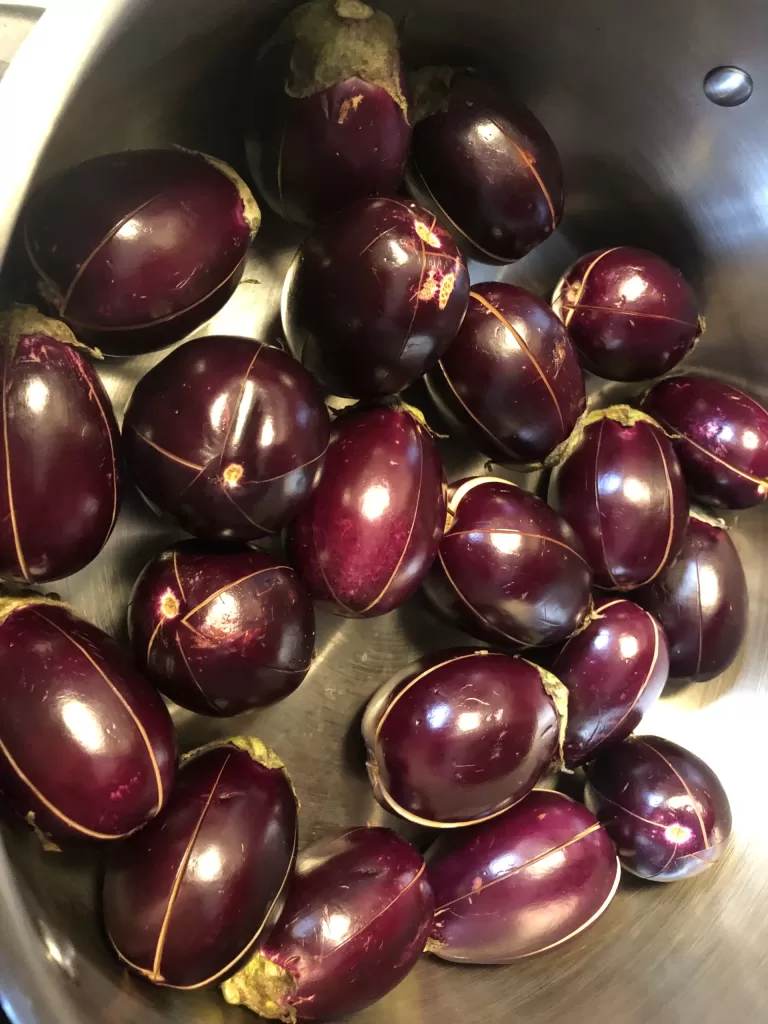
When selecting the vegetables, look for uniformity in size and firmness. Don’t let a few blemishes deter you, but look for shiny, taught skin and solid texture. One note about the firmness; my experience is that the more firm the fruit, the longer it will take to cook to a desirable texture.
In a Baingan Bartha, and its distant Afghani cousin Bouranee Baunjuan, I like my eggplant to be very soft. Almost spreadable like a light preserve. In order to get to this state from a very firm plant requires quite a bit of cooking. The eggplant is often grilled or fried beforehand, then added to the gravy, sauce or curry. It is generally better to select softer eggplant when making this dish.
In Baingan Masala or Bagara Baingan – I’m willing to tolerate more texture, but hard, underdone eggplant in the final curry isn’t very enjoyable.
Check this link for another nice write-up on Baingan Bagara.
In the Masala and Bagara presentations, the eggplant is most commonly cut in multiple locations in order to speed up the cooking process and allow the flavors to penetrate into the dish. Ultimately – a balance between the curry and eggplant flavors would be ideal.
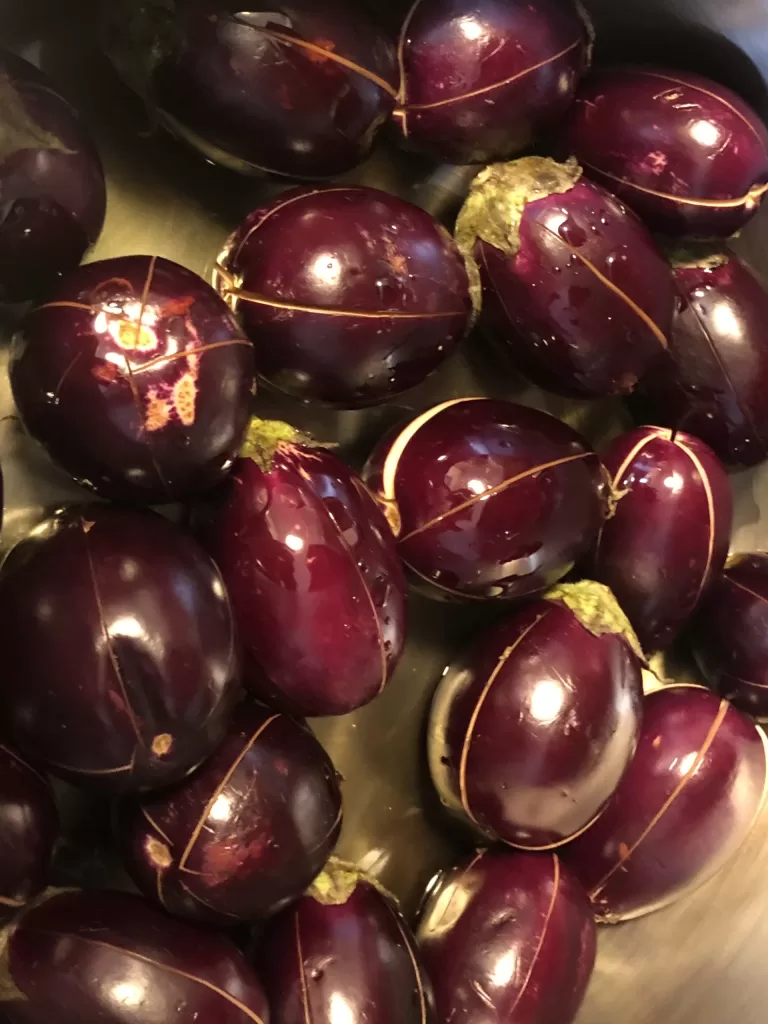
In many presentations the eggplant is cut entirely into quarters while still attached at the stem. I cut into, but not through the fruit if I can. I prefer the eggplants to be mostly whole when I serve them. I leave the caps on for the cook, only removing the stems to the base. This usually calls for a longer cooking time.
After cutting the eggplant – start by frying them in a very generous portion of gingelly oil. Don’t hold back on the oil. Even when you add what feels like too much, it still ends up not really being enough. Chef Marcus Samuelsson (I believe) said the same thing in one interview – following up with “The fat is the carrier of the flavor – without it – your curries will always be flat and lifeless.
I’ve tried the “less oil” method… It doesn’t work. The food simply requires it.
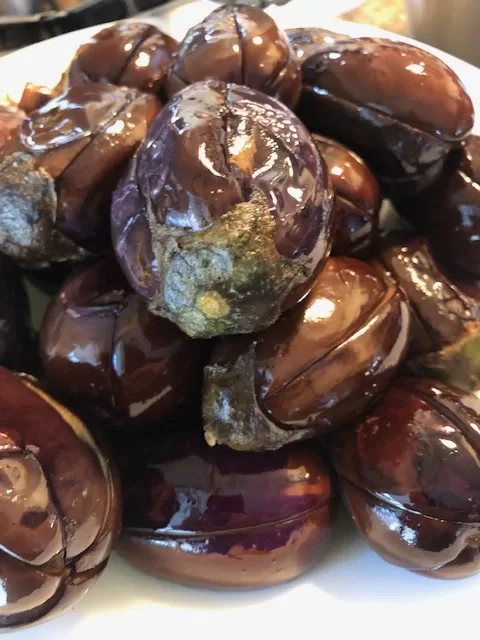
The eggplant pictured above are gently pan fried. In a commercial kitchen or restaurant, they would often be deep-fried. These were done in a pan with minimal oil and not cooked completely.
Then it’s time to start your curry base. (We’ll have a full video and description of that coming later.) There are many curry base videos and pages out in the wild. We have our own process – as – there are many ways to skin a good curry.
The Mutton Biryani video on out video page is a good place to start for making a unique base curry.
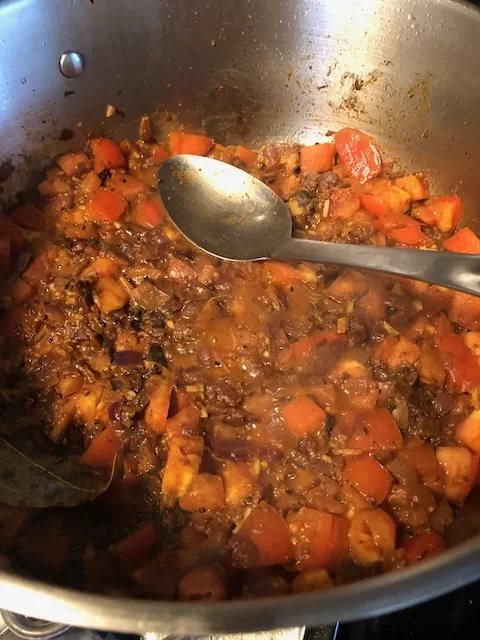
This curry starts with roughly 1/4-cup gingelly oil. When hot – bloom some asafetida, cumin seed, black and yellow mustard seed, and curry leaves.
Then add your onions with salt, sweat them down. Then garlic and ginger, garam masala, madras curry powder, black pepper, white pepper, fenugreek powder. Once the pan gets sticky – add your tomatoes, turmeric, toasted and ground sesame seeds, peanuts and coconut, some red chili powder, paprika, salt.
Allow the tomatoes to macerate and combine. Once again – when the pan gets sticky – add water – lots of it. You’re going to burn most of it off anyway.
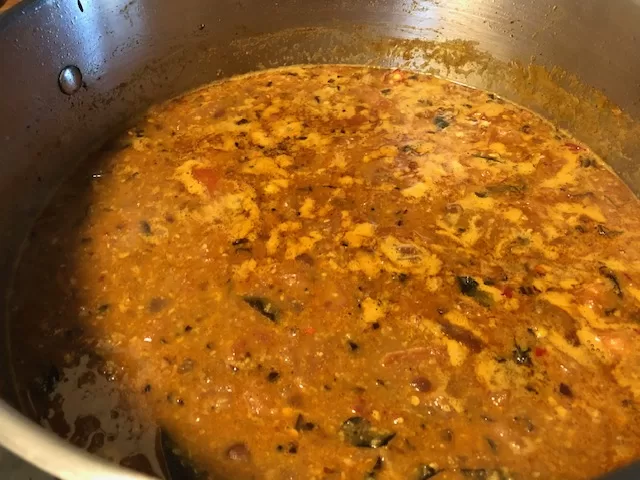
For this portion of the cook – just let it simmer – very slowly – until most of the oil in the dish rises to the top. At this point if you were really broken up about it – you could skim some of the fat. We never do. There should be a good amount of evaporation during this part of the process – but leave yourself some room – as it will be cooking for a while. Just don’t be in a hurry. The longer it takes – the better it will taste.
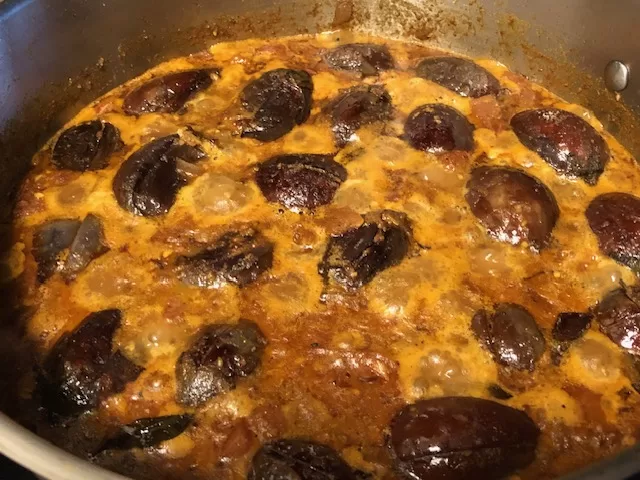
Once the curry simmers for a while – maybe 30-45 minutes – and you see the oil has risen to the top – add your eggplant and continue to simmer. At this point we’re trying to cook the eggplant and reduce the dish simultaneously. There’s never any reason to have it at a hard boil. A gentle simmer will do. After a while – they will begin to sit beneath the sauce and be almost totally covered.
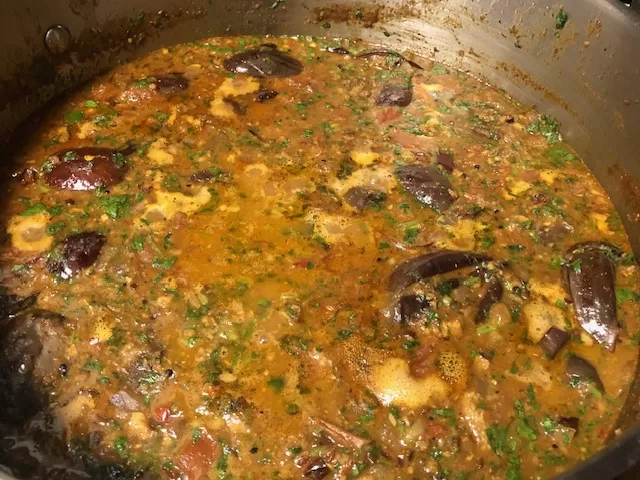
Continue to reduce to desired thickness and texture. Under-cooked eggplant are not fun – and overcooked, they tend to be mushy with little to no texture. Leaving the skin on prevents them from completely breaking up in the curry.
Below are some final stages of the dish – fully reduced.
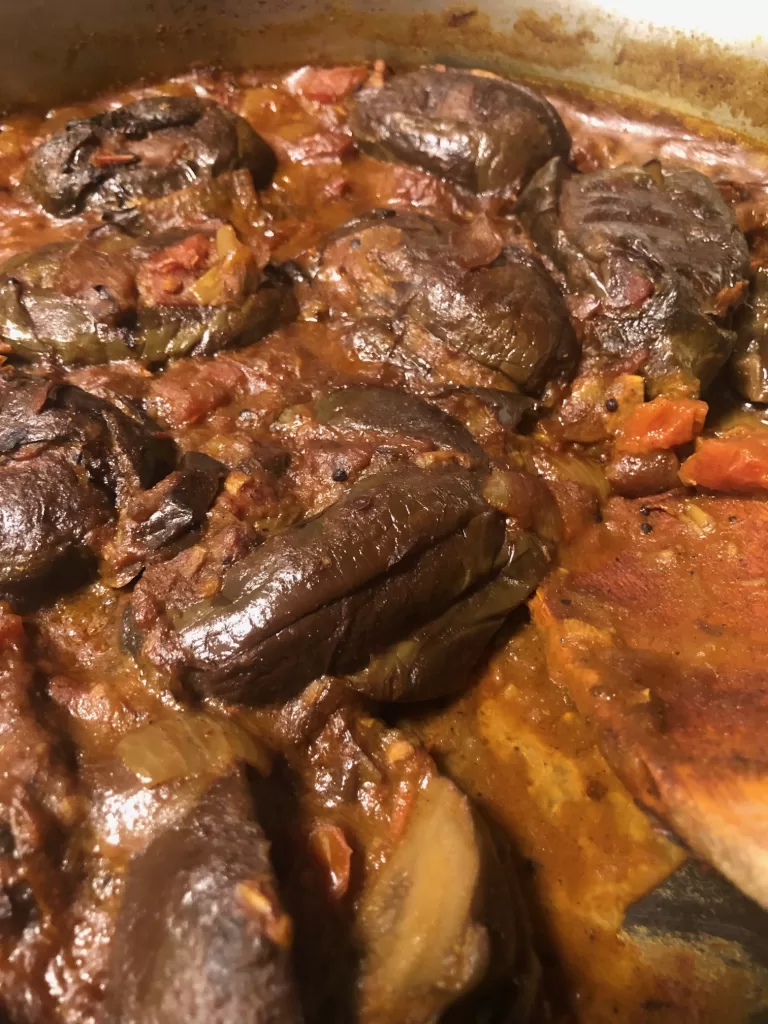
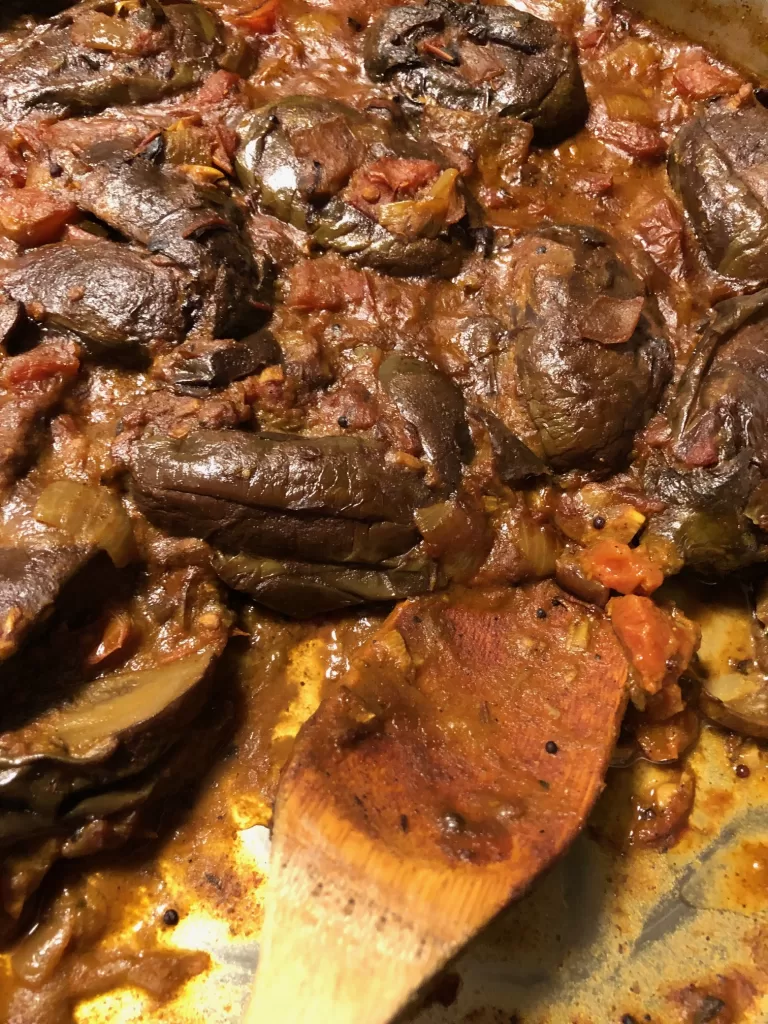
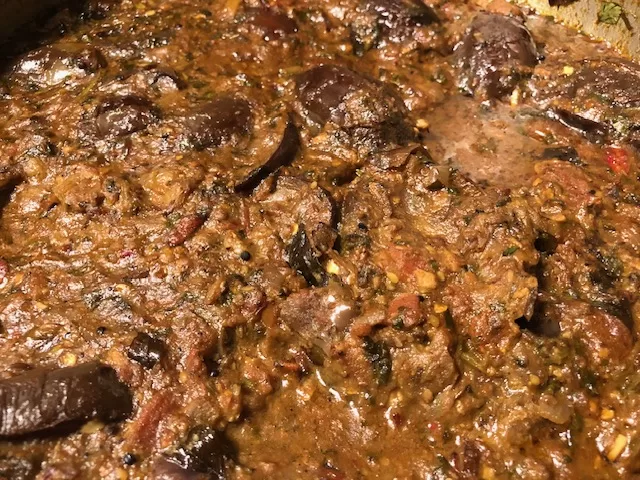
In Baingan Bartha presentations – the eggplant is generally done without skin. They are often roasted in the oven and then removed from the skin before being added to a later-stage curry. They don’t spend as much time cooking in the sauce. Below is a version of Baingan Bartha with the skin on – which I love as an entree – but I do prefer the skinless versions when it comes to spreading it across a nice piece of fresh naan.
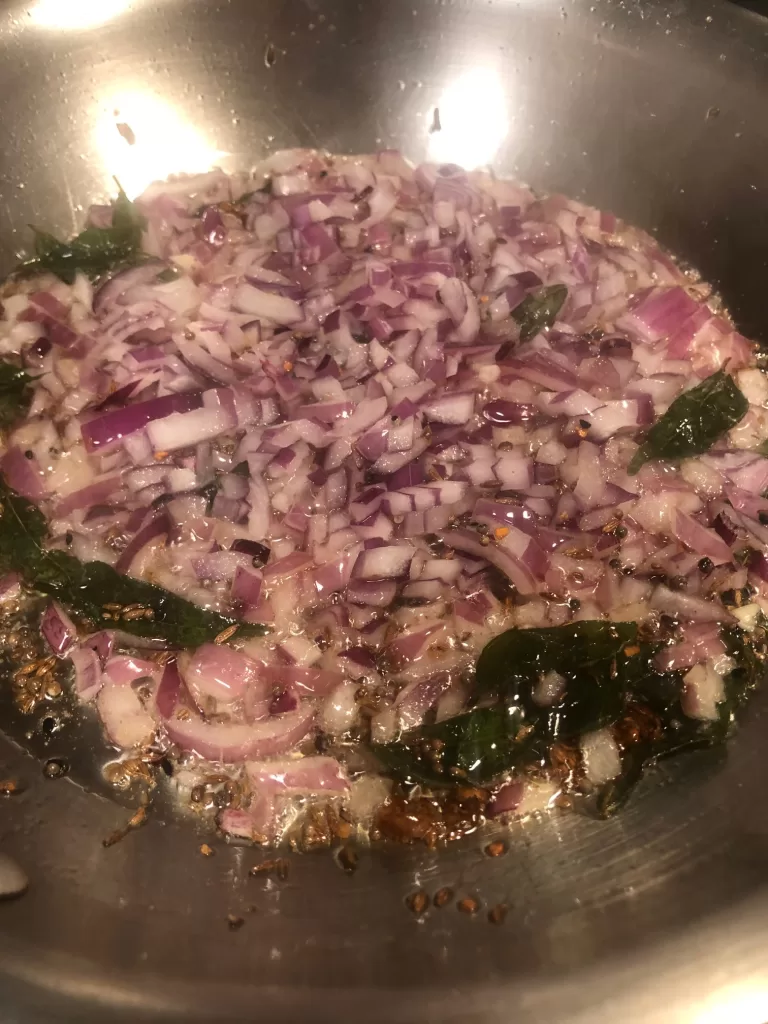
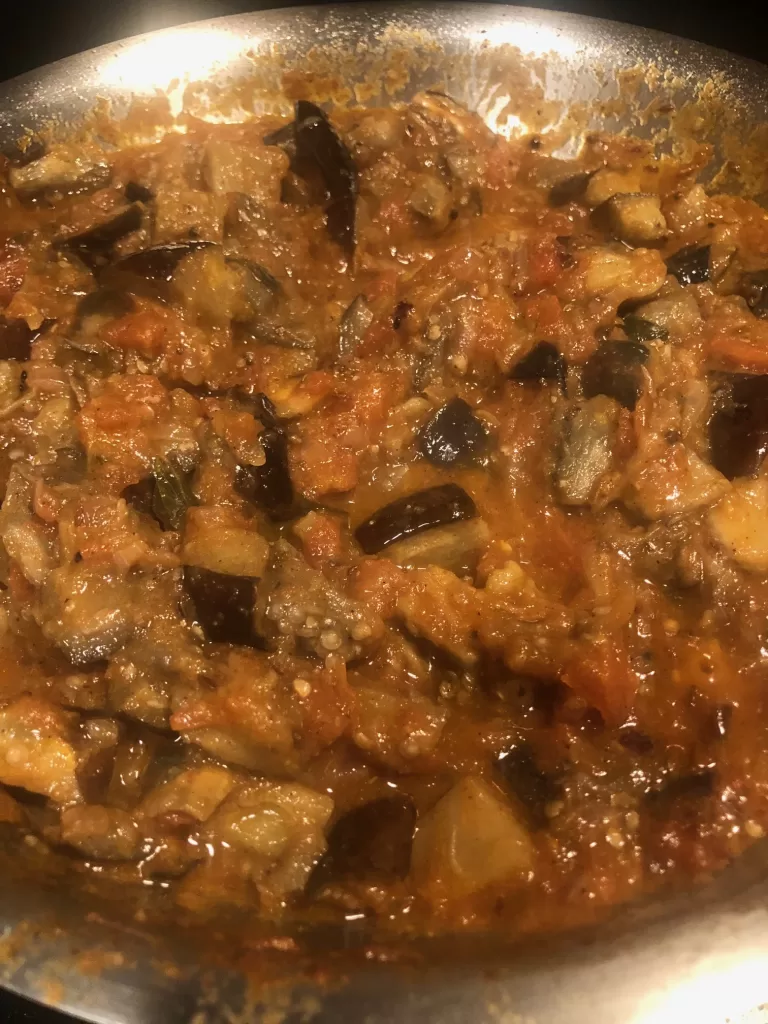
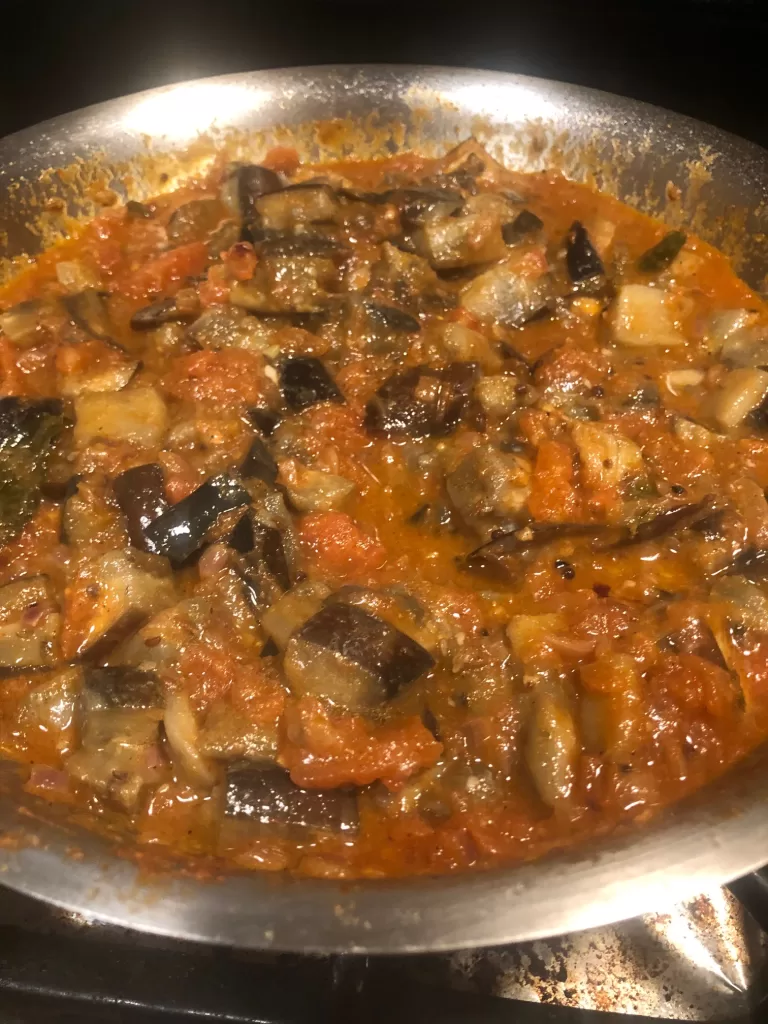
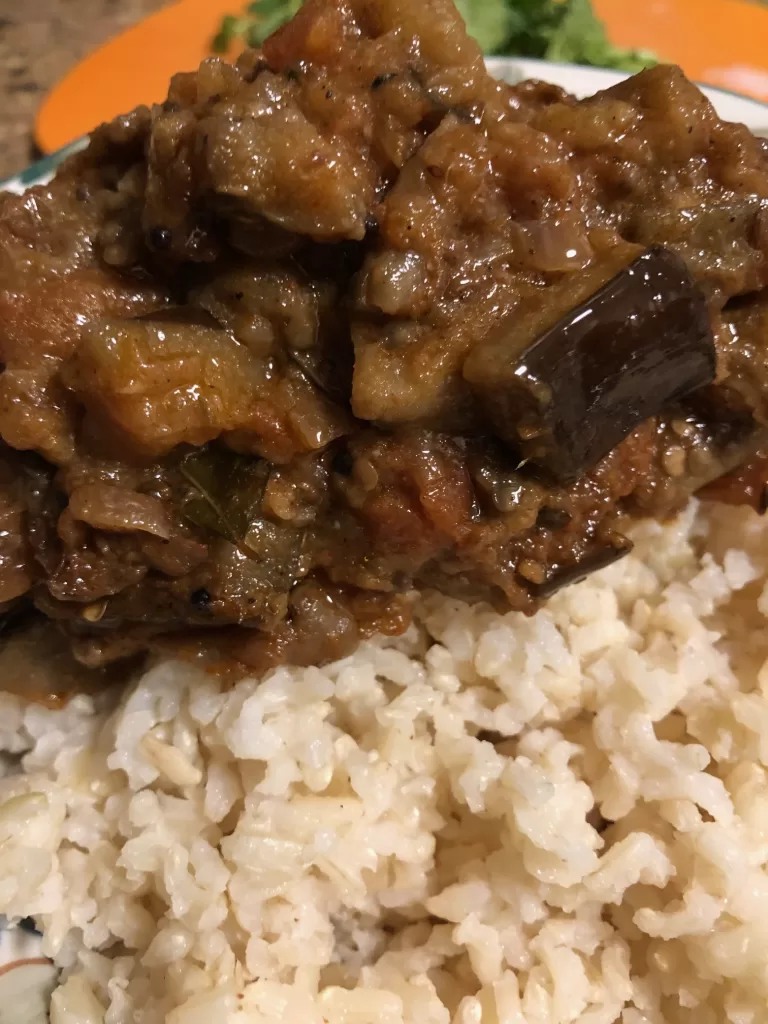

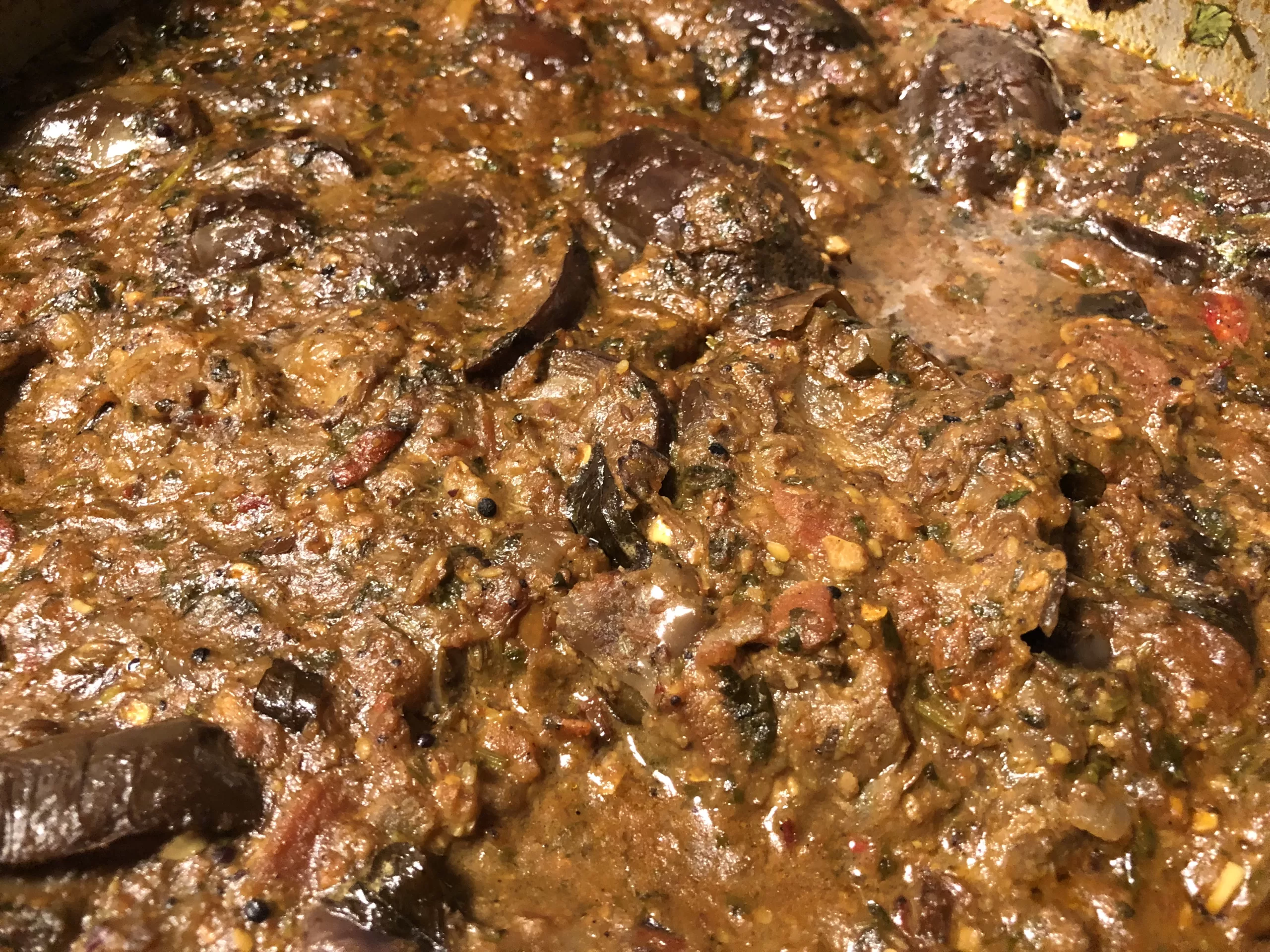
Leave a Reply